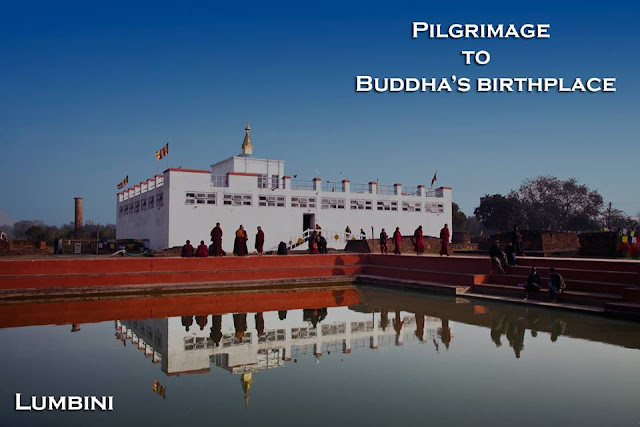Buddhism is a major religion of world that teaches way of spiritual developments, meditation and philosophy. Gautam Buddha was the founder of this spiritual religion. The main motive of Buddhism is to come out from soreness and cycles of re-birth and attainment of parinirvana. India is adorned with huge number of Buddhist temples and monastery across the whole country.
Sravasti was an ancient & historical city located in northern state Uttar Pradesh. Lord Buddha spent 25 rainy seasons or 24 Chaturmas - a holy period of four months of July to October in this religious city. This city is counted among top ten largest cities during Gautama Buddha' time.
Sravasti is also referred as Sahet-Mahet and is renowned for magical achievement showed by Lord Buddha sitting on a seated on a thousand-petalled lotus.
Numerous monasteries built in Sravasti by various counties like as Thailand, South Korea, Sri Lanka, Myanmar, Tibet and China. There are many numbers of primitive stupas, forts, majestic viharas and temples representing strong association of Lord Buddha with Shravasti, founded by Vedic period king, Shravasta.
Sravasti was an ancient & historical city located in northern state Uttar Pradesh. Lord Buddha spent 25 rainy seasons or 24 Chaturmas - a holy period of four months of July to October in this religious city. This city is counted among top ten largest cities during Gautama Buddha' time.
Sravasti is also referred as Sahet-Mahet and is renowned for magical achievement showed by Lord Buddha sitting on a seated on a thousand-petalled lotus.
Numerous monasteries built in Sravasti by various counties like as Thailand, South Korea, Sri Lanka, Myanmar, Tibet and China. There are many numbers of primitive stupas, forts, majestic viharas and temples representing strong association of Lord Buddha with Shravasti, founded by Vedic period king, Shravasta.
Some major attractions of Sravasti are:
Jetavana: It host to Lord Buddha and his pilgrims, where one of his followers, a rich merchant, covered the whole ground of the park (vana) with gold coins. Jetavana monastery is main tourist attractions with meditation and chanting made at Gandhakuti, known as Buddha's hut and Anandabodhi tree. It is the place where Lord Buddha spent 19 rainy seasons. The main attractions of this place are Anandabodhi tree, Anandakuti and Gandhakuti.
The Ananda Bodhi Tree: Under this bodhi tree Lord Buddha Meditated for a night.
Balrampur: Known for a shrine constructed in contemporary architectural style.
Saheth: A main pilgrimage place where various temples, stupas and monasteries are situated
Anathapindika Stupa: A much admired Buddhists site erected by Anathapindika.
Sobhanath Temple: Birthplace of Tirthankara Sambhavanath in Jainism.
Explore great Buddhism in Sravasti, a place of 25 rainy seasons of Buddha with Buddhist Tour, a well known tour planner in India. We offer personalized travel services for comfortable and happy journey.
Jetavana: It host to Lord Buddha and his pilgrims, where one of his followers, a rich merchant, covered the whole ground of the park (vana) with gold coins. Jetavana monastery is main tourist attractions with meditation and chanting made at Gandhakuti, known as Buddha's hut and Anandabodhi tree. It is the place where Lord Buddha spent 19 rainy seasons. The main attractions of this place are Anandabodhi tree, Anandakuti and Gandhakuti.
The Ananda Bodhi Tree: Under this bodhi tree Lord Buddha Meditated for a night.
Balrampur: Known for a shrine constructed in contemporary architectural style.
Saheth: A main pilgrimage place where various temples, stupas and monasteries are situated
Anathapindika Stupa: A much admired Buddhists site erected by Anathapindika.
Sobhanath Temple: Birthplace of Tirthankara Sambhavanath in Jainism.
Explore great Buddhism in Sravasti, a place of 25 rainy seasons of Buddha with Buddhist Tour, a well known tour planner in India. We offer personalized travel services for comfortable and happy journey.



















